Helmet Fit and Comfort for Riders
- Proper fit and comfort of a motorcycle helmet are crucial for safety and riding experience.
- Choose the right helmet based on head shape, size, style, features, and safety ratings.
- Fit the helmet snugly and securely, ensuring it sits level on the head without causing discomfort.
- Adjust the fit system (if available) and chin strap for a customized fit.
- Break in the helmet, add or remove padding if needed, and consider a helmet communication system for enhanced comfort.
- Regular helmet maintenance and replacement are essential for continued safety and comfort.
Helmet Fit and Comfort: A Comprehensive Guide for Riders
Maintaining a proper helmet fit and optimum comfort is crucial for motorcyclists' safety and riding experience. An ill-fitting helmet can compromise protection, diminish comfort, and lead to potential hazards. This guide provides comprehensive insights into selecting, fitting, and adjusting a motorcycle helmet for maximum fit, comfort, and protection. We will also explore ways to ensure long-term helmet comfort during your motorcycle rides.
I. Introduction
A. Importance of Helmet Fit and Comfort for Riders:
Properly fitted motorcycle helmets are essential for riders' safety and comfort. A snugly fitted helmet not only enhances protection in the event of an accident but also minimizes wind noise, reduces fatigue, and optimizes overall riding comfort.
B. Consequences of Improper Helmet Fit:
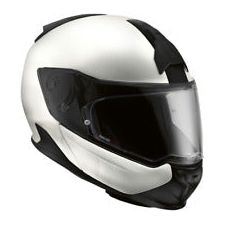
Title: BMW MOTORRAD SYSTEM 7 HELMET
Price: £520.00
SHOP NOW
Compromising on helmet fit can have serious consequences. An ill-fitting helmet may:
- Offer inadequate protection in case of an accident, increasing the risk of head injuries
- Cause discomfort and fatigue during long rides, potentially leading to distraction and reduced riding enjoyment
- Generate excessive wind noise, impairing communication and situational awareness
II. Choosing the Right Helmet
A. Determine Head Shape and Size:
- Measure Head Circumference:
To accurately determine your helmet size, measure the circumference of your head using a flexible tape measure. Place the tape around your forehead, slightly above your eyebrows, and wrap it around the widest part of your head. Record the measurement in inches or centimeters.
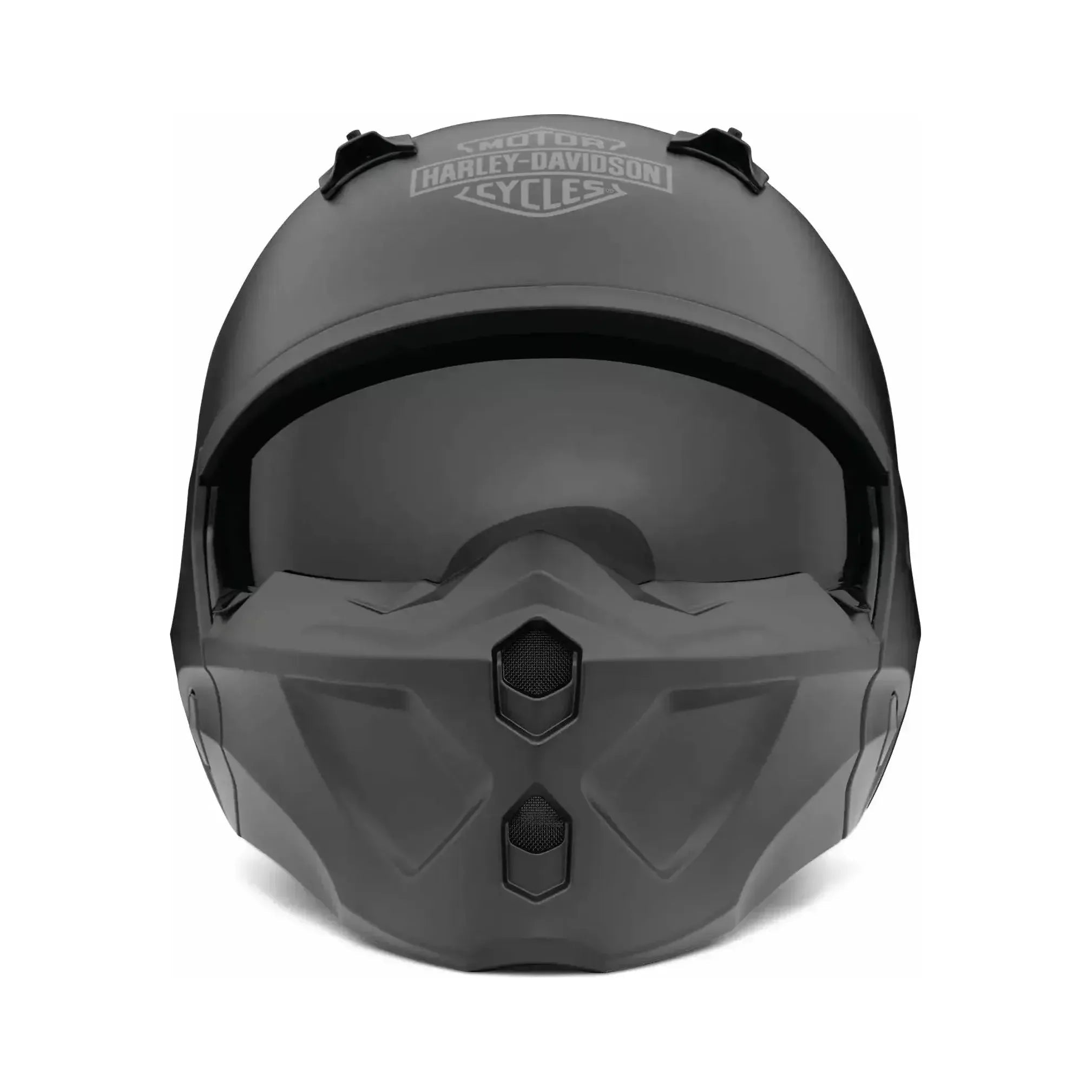
Title: HARLEY-DAVIDSON® GARGOYLE X07 2-IN-1 HELMET
Price: £269.99
SHOP NOW
- Consider Head Shape (Oval, Round, Intermediate):
Head shapes generally fall into three categories: oval, round, and intermediate (combination of oval and round). Identifying your head shape helps narrow down helmet choices that provide a comfortable and secure fit.
B. Select Helmet Style:
- Full-Face Helmet:
Offers maximum protection as it covers the entire head, including the face and chin. Recommended for all types of riding, especially high-speed and long-distance travel.
- Open-Face Helmet:
Provides less coverage compared to full-face helmets, exposing the face. Suitable for casual riding in urban areas or at low speeds. Not recommended for highway or long-distance riding.
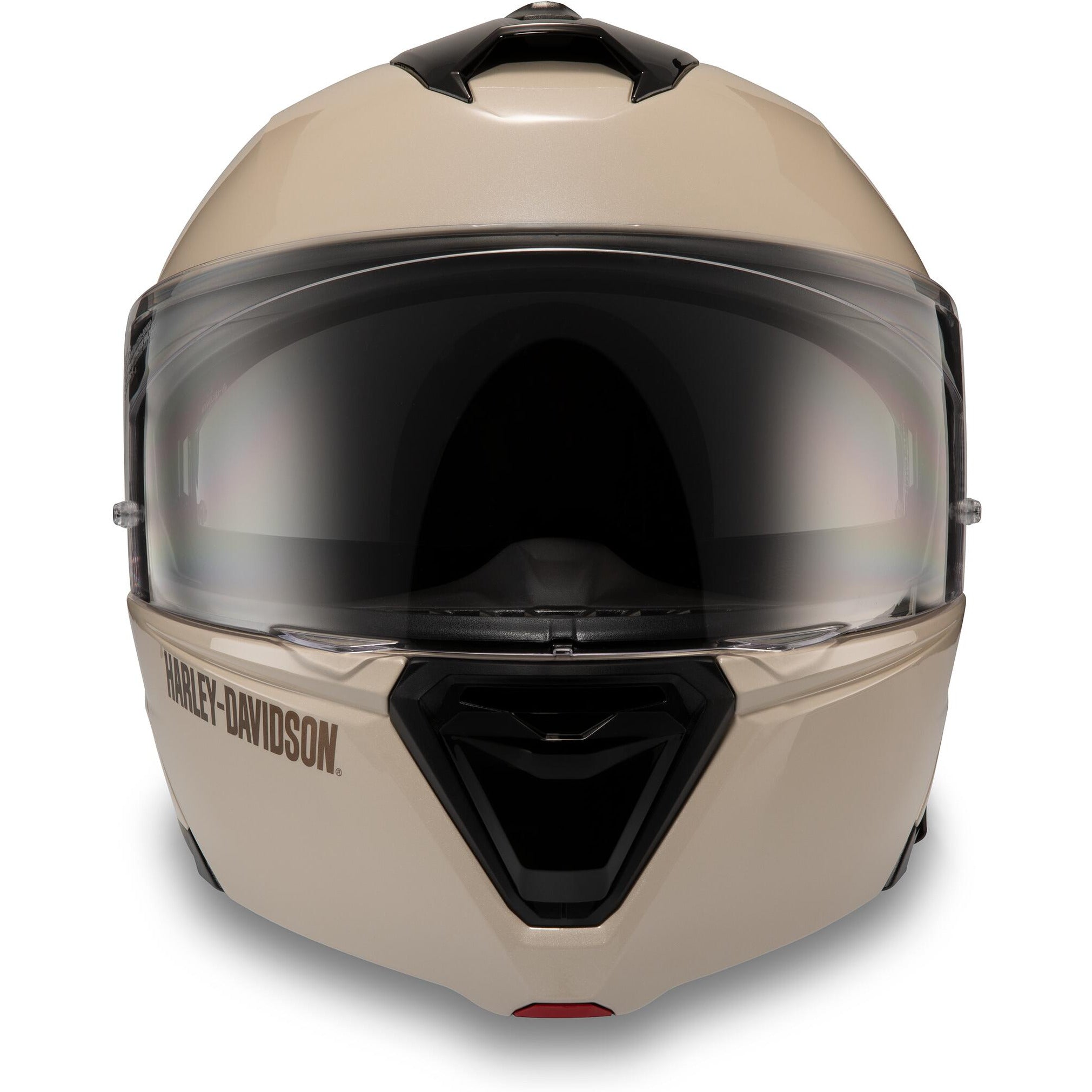
Title: HARLEY-DAVIDSON® CAPSTONE SUN SHIELD II H31 MODULAR HELMET-WHITE
Price: £247.33
SHOP NOW
- Modular Helmet:
A versatile helmet that combines the advantages of both full-face and open-face helmets. The chin bar can be lifted or removed, allowing for better ventilation during low-speed riding or increased protection when desired.
“Wearing a well-fitted helmet is the single most effective way to reduce the risk of head and brain injuries in a motorcycle crash. It can mean the difference between life and death.” - National Highway Traffic Safety Administration (NHTSA)
C. Consider Helmet Features:
- Ventilation:
Ventilation is crucial for comfort, especially during hot weather or long-distance riding. Look for helmets with adjustable vents or channels that allow air to circulate and prevent excessive sweating.
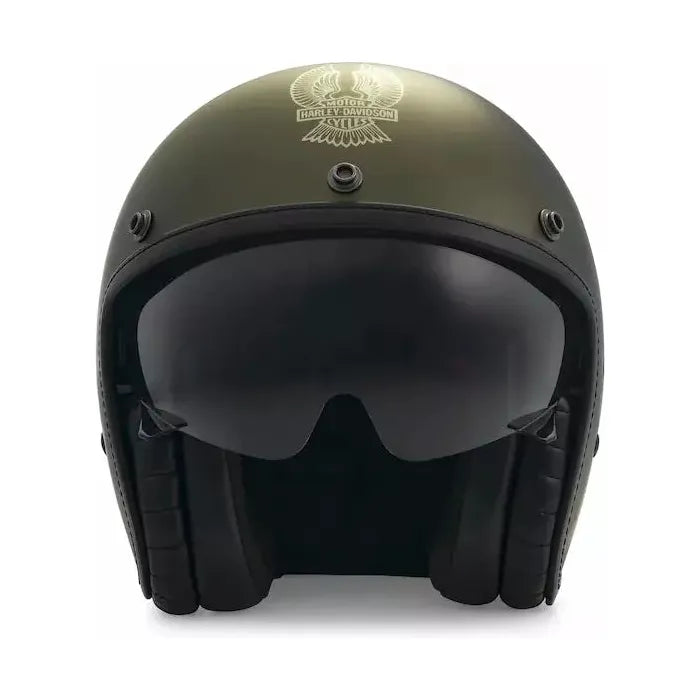
Title: HARLEY-DAVIDSON® SURPLUS X14 SUN SHIELD 3/4 HELMET
Price: £197.99
SHOP NOW
- Visor/Shield:
Visors or shields protect the rider's eyes from wind, dust, and debris. Some helmets have visors with anti-scratch, anti-fog, or tinted coatings for added protection and visibility.
- Padding and Lining:
Helmet padding and lining play a vital role in comfort and fit. Look for helmets with plush, comfortable materials that wick away sweat and provide a snug but not constricting fit.
- Safety Ratings:
Check the helmet's safety ratings to ensure it meets relevant industry standards, such as the DOT (Department of Transportation) or ECE (Economic Commission for Europe) standards.
III. Fitting the Helmet

Title: BMW MOTORRAD GS CARBON EVO HELMET XCITE
Price: £530.00
SHOP NOW
A. Put on the Helmet and Adjust the Chin Strap:
Place the helmet on your head and fasten the chin strap securely. The strap should be snug but not too tight, allowing for some movement of the jaw.
B. Ensure the Helmet Fits Snugly Without Causing Discomfort:
The helmet should fit snugly around your head without causing excessive pressure or discomfort. If the helmet feels too loose or too tight, try a different size or model.
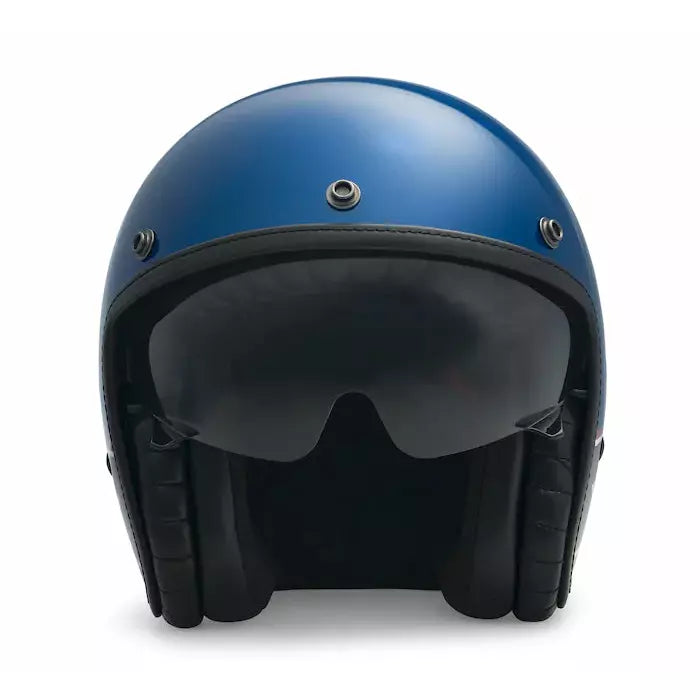
Title: HARLEY DAVIDSON® SUPERNOVA #1 X14 SUN SHIELD 3/4 HELMET
Price: £197.87
SHOP NOW
C. Check for Proper Positioning:
- Helmet Should Sit Level on Head, Not Tilted Back or Forward:
The helmet should sit level on your head, not tilted back or forward. The brow of the helmet should be about one finger-width above your eyebrows.
- * Brow of Helmet Should Be About One Finger-Width Above Eyebrows:*
The brow of the helmet should be about one finger-width above your eyebrows. This ensures proper vision and minimizes strain on your neck.
D. Evaluate Helmet Movement:
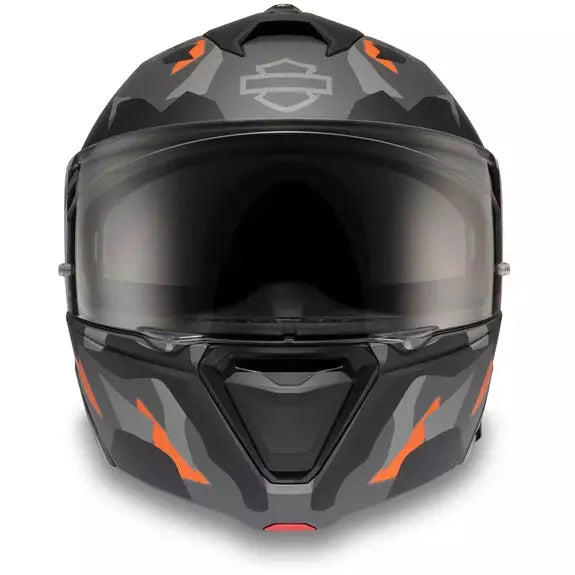
Title: HARLEY DAVIDSON® CAPSTONE CAMO SUN SHIELD II H31 MODULAR HELMET
Price: £247.33
SHOP NOW
- Helmet Should Not Move Excessively When Shaken from Side to Side or Tilted Forward:
Shake the helmet from side to side and tilt it forward. The helmet should not move excessively, indicating a secure fit.
- Helmet Should Not Lift Off Head When Chin Strap Is Fastened:
When the chin strap is securely fastened, the helmet should not lift off your head. This ensures it will stay in place in the event of an accident.
IV. Adjusting the Helmet
A. Tighten or Loosen the Chin Strap as Needed:
Adjust the chin strap to achieve a snug, comfortable fit. The strap should be tight enough to keep the helmet securely in place but not so tight that it causes discomfort or restricts breathing.
B. Adjust the Fit System (If Available):
- Tighten or Loosen the Dial or Knob at the Back of the Helmet:
Some helmets have a fit system that allows you to adjust the tightness of the helmet. Tighten or loosen the dial or knob at the back of the helmet as needed for a secure and comfortable fit.
[Image of a rider adjusting the fit system on their helmet]
- Inflate or Deflate Air Pockets, If Applicable:
Certain helmets feature air pockets that can be inflated or deflated to customize the fit. Follow the manufacturer's instructions for inflating or deflating the air pockets to achieve a snug fit.
C. Reevaluate Helmet Fit and Positioning:
After adjusting the fit system, reevaluate the helmet fit and positioning to ensure it sits properly on your head and does not cause discomfort.
V. Ensuring Comfort
A. Break in the Helmet by Wearing It for Short Periods Initially:
Initially, wear the helmet for short periods to allow it to conform to the shape of your head. Gradually increase the duration of wear as the helmet breaks in.
B. Add or Remove Padding or Liners for a Customized Fit:
If the helmet feels too loose or too tight in certain areas, consider adding or removing padding or liners to achieve a customized fit. Many helmet manufacturers offer different padding thicknesses or liners to accommodate various head shapes.
C. Consider a Helmet Communication System for Enhanced Comfort and Convenience:
Helmet communication systems allow riders to communicate with each other, listen to music, or receive GPS directions while riding. These systems can enhance comfort and convenience during long rides.
VI. Conclusion
Choosing the right helmet and ensuring a proper fit are essential for riders' safety and riding experience. A well-fitting helmet offers optimal protection, reduces wind noise, minimizes fatigue, and enhances comfort. Regular helmet maintenance and replacement, as needed, are crucial to ensure continued safety and comfort. Remember, the most expensive helmet is useless if it doesn't fit properly.
Outbound Links:
- National Highway Traffic Safety Administration (NHTSA) Motorcycle Helmet Safety
- American Motorcycle Association (AMA) Motorcycle Helmet Laws and Regulations
Table of Contents
Outline
- Introduction
- Choosing the Right Helmet
- Fitting the Helmet
- Adjusting the Helmet
- Ensuring Comfort
- Conclusion
Frequently Asked Questions (FAQ)
- Q: Why is it important to choose the right helmet?
- Q: How do I determine my head shape and size?
- Q: What are the different types of helmet styles?
- Q: What features should I consider when choosing a helmet?
- Q: How do I properly fit a helmet?
- Q: How do I adjust the fit of a helmet?
- Q: What can I do to ensure comfort while wearing a helmet?
- Q: How often should I replace my helmet?
A: Choosing the right helmet is crucial for your safety and riding comfort. A properly fitted helmet provides optimal protection, reduces wind noise, minimizes fatigue, and enhances comfort during rides.
A: To determine your head shape and size, measure your head circumference using a flexible tape measure. Place the tape around your forehead, slightly above your eyebrows, and wrap it around the widest part of your head. Record the measurement in inches or centimeters. You can also consult a helmet sizing chart to find the right size for your head shape.
A: The main helmet styles include full-face helmets, open-face helmets, and modular helmets. Full-face helmets offer maximum protection, while open-face helmets provide less coverage. Modular helmets combine the advantages of both full-face and open-face helmets.
A: Consider features like ventilation, visor/shield, padding and lining, and safety ratings when choosing a helmet. Ventilation ensures comfort during hot weather or long rides, while a visor or shield protects your eyes from wind, dust, and debris. Comfortable padding and lining are essential for a snug fit. Check for safety ratings to ensure the helmet meets industry standards.
A: To properly fit a helmet, put it on, adjust the chin strap, and ensure the helmet fits snugly without causing discomfort. The brow of the helmet should be about one finger-width above your eyebrows. The helmet should not move excessively when shaken or tilted forward. When fastened, the chin strap should keep the helmet securely in place.
A: If needed, you can adjust the fit of your helmet by tightening or loosening the chin strap. Some helmets have a fit system that allows you to adjust the tightness at the back of the helmet. If applicable, you can also inflate or deflate air pockets to customize the fit.
A: Break in your helmet by wearing it for short periods initially. You can also add or remove padding or liners for a customized fit. Consider a helmet communication system for enhanced comfort and convenience during long rides.
A: The recommended lifespan of a helmet is typically 3-5 years, depending on usage and maintenance. It's important to regularly inspect your helmet for damage and replace it as needed.
Explore More:
Discover the Ultimate KTM Gear and Unleash Your Inner Adventurer Explore KTM Collection
Rev Up Your Style with Our Dazzling Motorbike Jackets Explore Motorbike Jacket Collection
Gear Up for Safety and Style with Premium Motorcycle Helmets Explore Motorcycle Helmet Collection
Embrace Italian Sophistication with Our Ducati Collection Explore Ducati Collection
Elevate Your Ride with Unmatched BMW Apparel Explore BMW Collection
Feel the Thrill of Kawasaki: Explore Our Dynamic Collection Explore Kawasaki Collection
From Head to Toe: Shop Our Complete Motorcycle Apparel Range Explore Motorcycle Apparel Collection